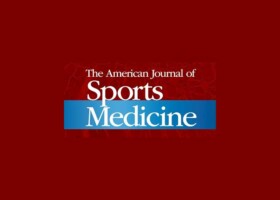
Authors:
Andrew T Pennock, W Wesley Pennington, Michael R Torry, Michael J Decker, Suketu B Vaishnav, Matthew T Provencher, Peter J Millett, Thomas R Hackett
Abstract:
Rotator cuff tears are a frequent and debilitating cause of shoulder disability. While the majority of rotator cuff tears involve the supraspinatus and infraspinatus muscles, an increased awareness and recognition of subscapularis tears has led to further investigations into the causes, diagnosis, and treatment of this entity. Acting as the largest and most powerful of the rotator cuff muscles, the subscapularis functions as the primary internal rotator of the humerus and stabilizes the humeral head in the glenoid cavity by resisting anterior, posterior, and inferior displacement. Injury or weakness to the subscapularis may lead to an increased incidence of impingement and/or anterior instability during humeral elevation, abduction, and external rotation. As such, it is important for clinicians to be able to properly identify, diagnose, and treat injuries of the subscapularis muscle.
The belly-press, lift-off, and bear-hug tests were all developed to identify subscapularis muscle injuries. Validated by Gerber the belly-press and lift-off tests are the most common physical examinations used to clinically detect subscapularis tears. More recent in its conception, the bear-hug test was introduced by Barth. While each test has been accepted as a reliable method to isolate the subscapularis muscle, significant variability exists among physicians in terms of how to perform each test. Moreover, patient factors including pain and shoulder stiffness can affect the clinical administration of these tests.
No study to date has examined the optimal arm or shoulder position during the execution of these tests, and it is unclear whether the means by which these tests are conducted may affect the integrity of the tests. Faulty arm position could theoretically yield results that are inconsistent with the true injury. Therefore, the purpose of this study was to utilize electromyography (EMG) to (1) determine the optimal arm and shoulder position for evaluating subscapularis function within the belly-press, lift-off, and bear-hug tests and (2) compare the efficacy of each clinical test in the isolation of the subscapularis muscle. Our hypothesis was that there would be no difference in subscapularis muscle activity when the arm is placed in varying positions for testing.
For the complete study: The Influence of Arm and Shoulder Position on the Bear-Hug, Belly-Press, and Lift-Off Tests
